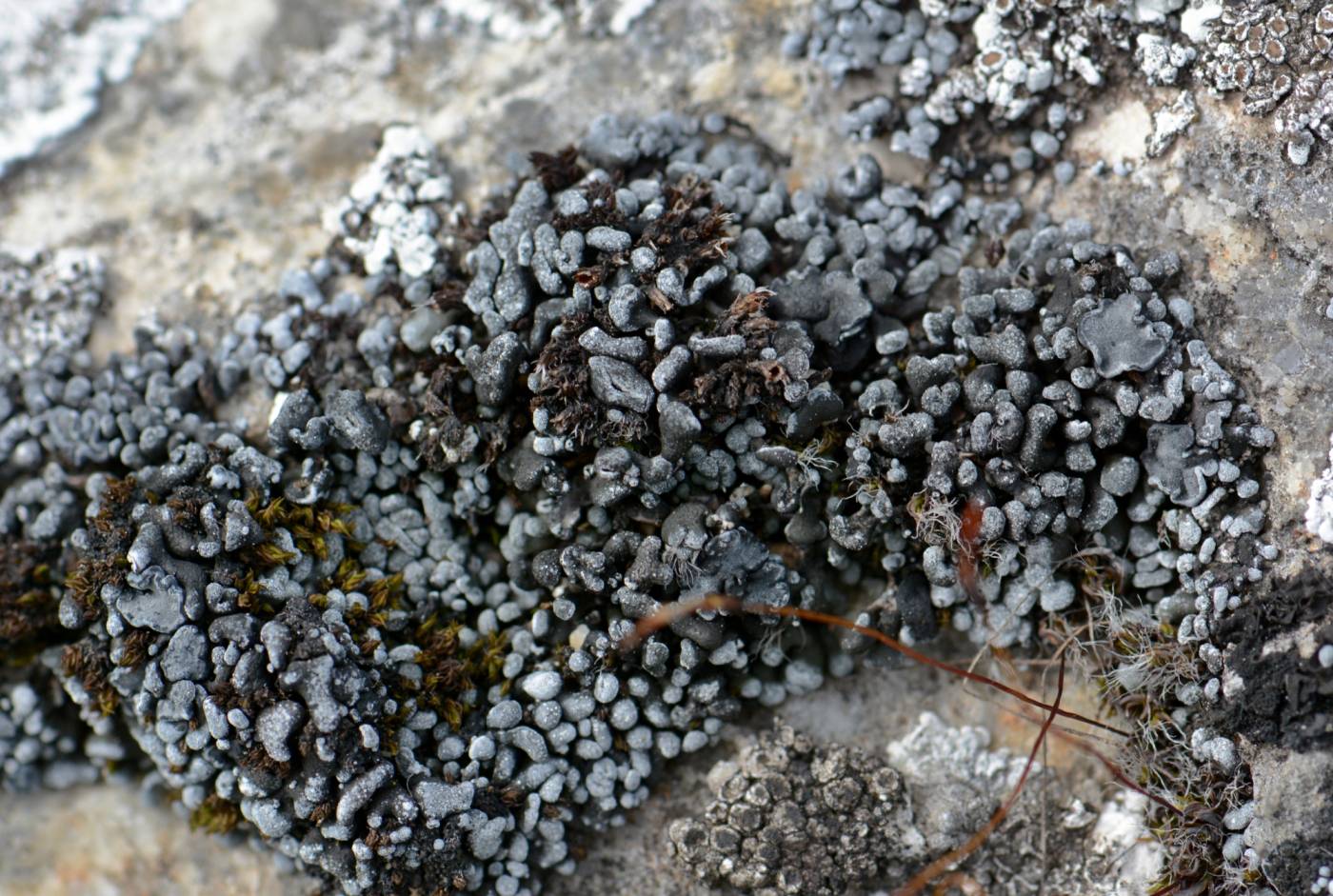Thalloidima sedifolium thallus consists of convex to irregularly lobed, olive-green, grey or brown squamules. The thalli and apothecia are very variable in the extent of their pruinosity. It is difficult to distinguish from T. opuntioides and T. physaroides in the field. In many cases, the distinction can only be made based on the analysis secondary metabolites by TLC or by studying microscopic characters.
The species grows on calcareous soil and rock, often associated with bryophytes or cyanolichens, especially when young. It occurs in cracks of sun-exposed natural rocks, but also on early successional soils developing after, e.g., limestone mining. It can be found from lowlands to high mountains. In Europe and in the Czech Republic, it is the most abundant species of Toninia sensu lato. The lichen is distributed all over the continent, in the Czech Republic mainly in karst areas but also known from calcareous insertions in volcanic rocks.
Revision of the European material of T. sedifolium (Westberg et al. 2023) revealed the presence of another, genetically and morphologically/anatomically clearly defined taxon – T. squamatum (Hoffm.) M. Westb. & Timdal. It is widely distributed in Europe, abundantly represented in herbaria and most probably also occurs in the Czech Republic. It forms larger areoles and apothecia, shorter ascospores (12–20 vs. 11–30 µm) and the excipulum is colourless to golden brown (dark reddish-brown in T. sedifolium). It differs from the predominantly terricolous T. sedifolium partly ecologically, preferring mossy cushions and calcareous rocks.
Literature: Westberg M., Ekman S., Briegel-Williams L., Fernandez-Brime S., Wedin M. & Timdal E. (2023): Thalloidima squamatum comb. nov. – a distinct and common but overlooked lichen in Europe. – Plant and Fungal Systematics 68: 353–363.
taxonomic classification:Ascomycota → Lecanoromycetes → Lecanorales → Ramalinaceae → Thalloidima
most frequented synonyms:Toninia coeruleonigrans, Toninia sedifoliaRed List (Liška & Palice 2010):LC – least concern
Red List (Malíček 2023):DD – data deficient
Occurrence in the Czech Republic
All records: 137, confirmed 61. One click on a selected square displays particular record(s), including their source(s).
